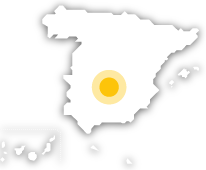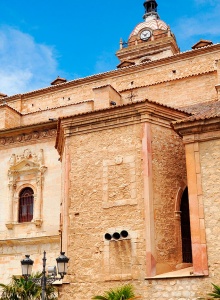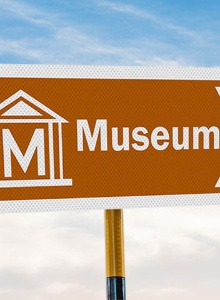Situated in Campo de Calatrava, landscape dominated by many hills, Ciudad Real offers a modern layout that has been able to maintain all the flavour of La Mancha.
Better communicated thanks to the Madrid-Seville high speed train, this city offers us exceptional cuisine centred on game, cheese and wine. In addition, the Cabañeros and Las Tablas de Daimiel natural parks tell us of its rich ecosystems.
During the Middle Ages, four kilometres of walls and one hundred and thirty towers protected a population made up of Christians, Moors and Jews. After the unification of the peninsular kingdoms under the Catholic Monarchs, Ciudad Real became the capital of the province of La Mancha in the 17th century. This fact favoured its economic development which was poured into important buildings.
A good example of La Mancha Mudejar architecture (14th C.) is the Puerta de Toledo, one of the eight gates which opened in the city's walled area. Its pointed horseshoe arches are flanked by two square towers.
Alfonso X (the Wise)
The unusual Gothic style in this city is shown in an artistic site planned by the founder of this city, Alfonso X (the Wise), and formed by three churches. Among them, the church of Santiago, the oldest of those preserved, is outstanding. Its origin is Gothic, but it was later enriched with a Mudejar roof and Baroque arches. Its mural paintings, one of which represents a seven-headed apocalyptic dragon, deserve attention.
The Cathedral of Santa María del Prod is another good example of the combination of styles, the consequence of a long construction process. Its earliest elements correspond to the 13th century, while the latest date from the 19th century Inside, the Baroque reredos and choir stalls are outstanding.
The third of these churches is that of San Pedro, a Gothic church from the end of the 14th century whose profile seems like a fortress. Its three doorways have decoration formed by archivolts, rosettes and decorated capitals. The architecture of this period uses Christian and Muslim elements indiscriminately, alternating Gothic pointed arches with Mudejar horseshoe ones, leading to a very unusual fusion of styles.
The area around the Plaza Mayor is a good area for tasting the wine with the La Mancha and Valdepeñas denominations of origin, which is good accompanied by some portions of the cheese from the region. Near the square we can get to know the typical elements of a large aristocratic La Mancha house. The Casa de Hernán López del Pulgar shows us, inside, a courtyard with columns and a Renaissance staircase.
The rest of modern Ciudad Real dates from the 19th century and beginning of the 20th, in which the Medrano Palace – the University Rectorate - the former Casino – now headquarters of the Musical Conservatory - and the Palace of the Provincial Government are outstanding. Meanwhile, the range of museums in Ciudad Real is centred on the Provincial Museum's archaeological treasures – the entrance door of the old synagogue is preserved here - and the Diocesan Museum.
“Don Quijote de la Mancha”
From Ciudad Real, we have many possibilities for getting to know this province, immortalised in Cervantes' work “Don Quijote de La Mancha”. In the county of Campo de Calatrava is Almagro, well known for its Open Air Theatre (National Monument) and its International Classical Theatre Festival. As well as other interesting buildings, its National Theatre Museum and Parador de Turismo are worth a visit.
This 16th century former convent brings us a little closer to La Mancha's history and art, as well as its cuisine. It is a wonderful place for doing justice to a cuisine with rural and pastoral origins. La Mancha cheeses and Almagro aubergines, both with their own Denomination of Origin, serve as an aperitif for game dishes like rabbit with garlic, hare with rice, stewed partridge and so on. "Gachas" (made with flour), "migas" (breadcrumbs accompanied by pork products) and "tiznao" (cod with peppers, onions and garlic) are some suggestions. And, for dessert, "pestiños" (sweetened mixture of fried flour) or "mostillo" (sweet made from grape must), among many other recipes.
Campo de Calatrava also offers us castles, palaces and places of great historical-artistic importance like El Viso del Marqués, Almuradiel or Calzada de Calatrava. Meanwhile, in the county of Campo de Montiel, you will discover the medieval remains of Montiel, the Lagunas de Ruidera Natural Park and places like Villanueva de los Infantes and Villamanrique.
This province's rich natural landscape is made clear in two national parks: Cabañeros and Las Tablas de Daimiel. Mediterranean woodland accompanies by meadows and wetland on the La Mancha plain form the main features of these protected areas.











